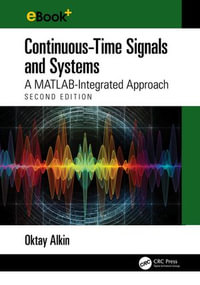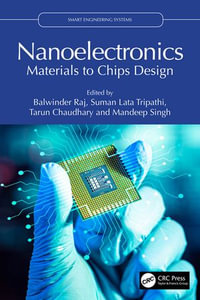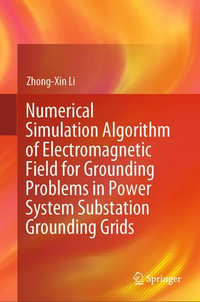
eTEXT
Microwave Amplifier and Active Circuit Design Using the Real Frequency Technique
By: Pierre Jarry, Jacques N. Beneat
eText | 21 March 2016 | Edition Number 1
At a Glance
eText
$197.99
Instant online reading in your Booktopia eTextbook Library *
Read online on
Not downloadable to your eReader or an app
Why choose an eTextbook?
Instant Access *
Purchase and read your book immediately
Read Aloud
Listen and follow along as Bookshelf reads to you
Study Tools
Built-in study tools like highlights and more
* eTextbooks are not downloadable to your eReader or an app and can be accessed via web browsers only. You must be connected to the internet and have no technical issues with your device or browser that could prevent the eTextbook from operating.
Describes the use of the Real Frequency Technique for designing and realizing RF/microwave amplifiers and circuits
This book focuses on the authors' Real Frequency Technique (RFT) and its application to a wide variety of multi-stage microwave amplifiers and active filters, and passive equalizers for radar pulse shaping and antenna return loss applications. The first two chapters review the fundamentals of microwave amplifier design and provide a description of the RFT. Each subsequent chapter introduces a new type of amplifier or circuit design, reviews its design problems, and explains how the RFT can be adapted to solve these problems. The authors take a practical approach by summarizing the design steps and giving numerous examples of amplifier realizations and measured responses.
- Provides a complete description of the RFT as it is first used to design multistage lumped amplifiers using a progressive optimization of the equalizers, leading to a small number of parameters to optimize simultaneously
- Presents modifications to the RFT to design trans-impedance microwave amplifiers that are used for photodiodes acting as high impedance current sources
- Discusses the methods using the RFT to optimize equalizers made of lossy distributed networks
- Covers methods and examples for designing standard linear multi-stage power amplifiers and those using arborescent structures
- Describes how to use the RFT to design multi ]stage active filters
- Shows the flexibility of the RFT to solve a variety of microwave circuit design problems like the problem of passive equalizer design for Radar receivers
- Examines a possible method for the synthesis of microwave antennas using the RFT
Microwave Amplifier and Active Circuit Design Using the Real Frequency Technique is intended for researchers and RF and microwave engineers but is also suitable for advanced graduate students in circuit design.
Dr. Beneat and Dr. Jarry are members of the editorial board of Wiley's International Journal of RF and Microwave Computer Aided Engineering. They have published seven books together, including Advanced Design Techniques and Realizations of Microwave and RF Filters (Wiley-IEEE 2008), Design and Realizations of Miniaturized Fractals RF and Microwave Filters (Wiley 2009), Miniaturized Microwave Fractal Filters—M2F2 (Wiley 2012), and RF and Microwave Electromagnetism (Wiley-ISTE 2014).
Read online on
ISBN: 9781119073109
ISBN-10: 1119073103
Series: IEEE Press
Published: 21st March 2016
Format: ePUB
Language: English
Audience: Professional and Scholarly
Publisher: Wiley Professional Development (P&T)
Country of Publication: US
Edition Number: 1























